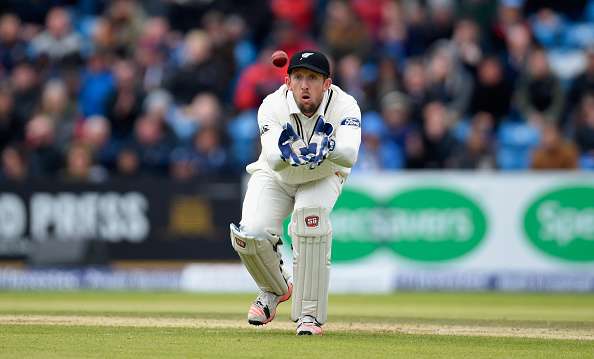Tristan Lavalette looks back on the fascinating journey of one of cricket’s most explosive batsmen
Shane Warne looked noticeably baffled. The legendary leg-spinner couldn’t fathom how his magic was audaciously being swatted away with such utter disdain.
Not even the greatest bowler in the world could curtail Luke Ronchi, Western Australia’s precocious wicketkeeper/ batsman, on this historic night in January 2005. Warne, who would take a record 96 Test wickets that year, could only haplessly watch his bowling repeatedly being dispatched into a delirious crowd.
For the first time in decades, the WACA ground in Perth was at capacity for a domestic match. Victoria and WA had the honour of playing the inaugural t20 match in Australia, but the format was very much a novelty.
Pundits and fans weren’t sure what to make of cricket’s newest format and if it was just merely a fad. But everyone at the ground on that archetypal balmy summer’s evening knew a special talent had emerged.
Just 23 years old at the time, Ronchi’s blistering 24-ball 67 included one surreal stretch where he smashed five sixes in nine balls. During the assault, Ronchi notably victimised Warne who leaked an astonishing 32 runs from 13 deliveries.
Inevitably, Ronchi’s spectacular drew comparisons to incumbent Australia keeper/master blaster his WA compatriot Adam Gilchrist. Like Gilchrist, he was tallish for a wicketkeeper and reliable behind the stumps.
Gilchrist was still at his pomp at the time but ageing, and Australian cricket chiefs were already searching for his successor. Despite some obvious shortcomings in his game – he had yet to grasp the ability to bat in tempo – Ronchi’s innate match-winning instincts with bat and reliable keeping were seen as requisite for the keeper/batsman prototype Gilchrist had helped mould.
Fast forward a decade, and Ronchi now finds himself in the most peculiar position. He never ended up succeeding Gilchrist at Test level although Ronchi did play a handful of ODIs and t20 matches in the late Noughties for Australia.
These days, Ronchi is the regular gloveman for New Zealand, Australia’s nearby adversary, in the shorter formats and BJ Watling’s back-up at Test level.
Finally, the trans-Tasman rivalry has reached an unparalleled intensity this year. The teams contested the 50-over World Cup final in March, and the upcoming three-Test series in Australia is eagerly anticipated.
Coincidentally, amid arguably New Zealand’s greatest ever year, Ronchi has had to grapple with an array of conflicting emotions. Ronchi played in the World Cup final and endured the agony of losing to his former team, which had a slew of his teammates from when he represented Australia.
Ronchi is part of New Zealand’s Test squad in Australia, and despite being behind Watling in the pecking order, could play a long-awaited Test match on Australian soil.
It’s been a long and at times highly frustrating journey for Ronchi who was born in Dannevirke, on New Zealand’s north island, but moved to Western Australia with his family at age six. He developed an affinity with cricket and his madcap batting was notable at an early age.
Jeff Grzinic played with Ronchi for 15 years at Perth Cricket Club and described his former teammate as a “freakish talent”.
“I was fortunate enough to play in Ronch’s first ever grade game when he was about 15,” Grzinic recalls. “He took to grade cricket and playing against men easily. As ‘Ronch’ was steadily rising up the ranks we also had Adam Gilchrist at our club, who was then playing for WA and Australia. On the odd occasion ‘Gilly’ and Ronch both played at the same time, Ronch often kept while Gilly had a run around.”
Despite being burdened with huge expectations at a tender age, Ronchi’s quiet demeanour and staid temperament – the antithesis to his frenetic batting – was an important counterpoint to the reverberating white noise.
“You just knew he was different to any other young up and coming star,” Grzinic says. “He never got distracted by the peripheral things that most young guys do and was just so focused on achieving his cricket dreams. He was never arrogant or cocky and was often visibly uncomfortable when people would talk him up. He is very humble and down to earth, and an unassuming quiet guy.”
Gilchrist retired from international cricket in early 2008 and Ronchi seemed destined to fulfil his early promise when he made his ODI debut not long after. He smashed a 22-ball half-century against the West Indies in only his second innings. But Ronchi’s eclectic talents couldn’t materialise in the international arena and his inconsistencies led to just four ODIs and three t20s for Australia.
After many years being hailed as Gilchrist’s successor, particularly for the shorter formats, Ronchi’s struggles couldn’t have come at a worse time, as the indefatigable Brad Haddin quickly cemented his position as Australia’s preferred wicketkeeper in all formats.
Ronchi’s international banishment appeared terminal, but even worse, he was soon facing a struggle in domestic cricket following the emergence of the exciting Sam Whiteman in the Western Australian ranks.
In early 2012, aged 31, Ronchi could read the writing on the wall. A bevy of talented wicketkeepers were dotting Australian domestic cricket, while Haddin still appeared to have a few years left at the top level. It was evident Ronchi had been red-stamped and would never play for Australia again.
So he packed up and headed back to the country of his birth.
He signed for Wellington in March 2012, and the following year was picked by New Zealand just four months after his four-year transition period was over. Ronchi became the first player in history to have represented both Australia and New Zealand, and just the 23rd cricketer to have played for two countries.
Grzinic says Ronchi, despite pessimism from the nay-sayers, always believed he could play Test cricket. “Luke has always been very determined and driven from a teenager to make it in cricket and moving back to New Zealand was the culmination of that,” he says.
“I think deep down he knew he was good enough to make it but never had an extended period at that level. He was always better than a first class player.”
At 34, and a decade after he first seared into the mainstream’s consciousness, Ronchi made his belated Test debut at Headingley against England with Watling injured.
With New Zealand struggling at 144-5 on the opening day, Ronchi launched a stunning counterattack to revive his side’s sagging spirit. He scored a 70-ball 88, which included three trademark towering sixes.
Much like his assault on Warne and the Victorian bowlers a decade earlier, Ronchi’s Test debut innings showcased his prodigious gift. Simply, he has the hitting power few genuinely possess and is basically impossible to stop when in full flow.
Frustratingly, the innings highlighted his chronic inconsistency. Much like Shahid Afridi and Glenn Maxwell, Ronchi’s an X-factor type cricketer albeit an even greater tease than those temperamental tricksters.
Further underlying this, Ronchi blasted 170 not out off 99 balls in an ODI against Sri Lanka in January but then disappointingly submitted a sub-par World Cup campaign.
Perhaps he’s always destined to exasperate. He’s likely to finish with a career that will somewhat underwhelm. Ronchi may very well end up a member of the one-Test club.
Still, it’s been highly entertaining to watch his unexpected late career renaissance. Truthfully, few can strike a cricket ball so devastatingly.
Just ask Warnie.
This piece originally featured in The Cricket Paper on Friday October 30, 2015















